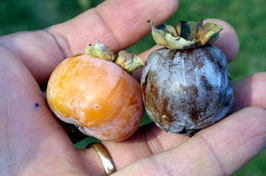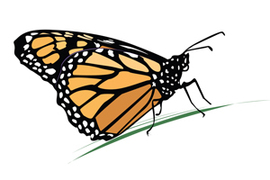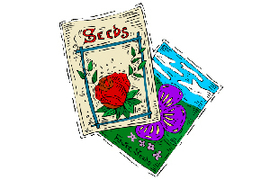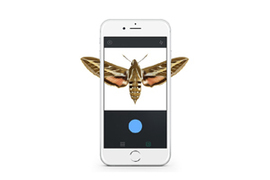|
|
Vol. 22, No. 1 | Fall 2017
|
|
|
Welcome to the fall edition of HabiChat, our quarterly backyard wildlife habitat newsletter from the Wild Acres program. Fall is my favorite time of year. This issue is dedicated to a native fruit tree known as the persimmon, explains why opossums are awesome and lists recommended plants for fall pollinators. In addition, there is a small piece on sowing fall seeds and two new citizen-science projects you may want to check out.
If there is a particular topic that you would like to see included in a future edition, please don’t hesitate to let us know. Happy Habitats!
Sincerely,
Kerry Wixted
|
|
 Native Plant Profile: Persimmon
Persimmon (Diospyros virginiana) is a high wildlife value tree in the persimmon family (Ebenaceae). The genus name, Diospyros, literally translates to “Fruit of the Gods,” but when unripe, the fruit can be quite distasteful! This large fruit tree can grow up to 80 feet in height and prefers partial to full shade environments.
Persimmons can be found throughout much of Maryland, aside from Garrett County.
|
 Native Wildlife: Opossum
Lurking in backyards around Maryland is an unsung hero: the Virginia opossum. With its rat-like tail and 50-tooth grin, it isn’t always revered. However, recent research has indicated the Virginia opossum as an important tick predator, grooming off and consuming almost 4,000 ticks per week! In contrast, species like eastern cottontails and deer mice tend to leave ticks on their bodies. If that isn’t cool enough, a peptide in opossum blood can neutralize snake venom, allowing it to dine on venomous snakes.
|
|
|
 Fueling Fall Pollinators
While many flowers are finished blooming by the fall, pollinators like bees, butterflies, moths, wasps and flower flies are still out foraging for food. This late group of pollinators also includes the monarch butterfly, which needs nectar to fuel its southward migration. Feed fall pollinators by providing late-blooming nectar resources.
 Fall Seed Sowing
Did you know? Fall is the perfect time to sow many wildflower seeds! Learn why.
|
|
 Backyard Wildlife: Tracks
Tracking wildlife is a fun activity that everyone can enjoy. One of the most important items for doing so is a field journal. By keeping a field journal, you can record observations you have made and preserve your finds. Animals leave many clues as to where they have been and what they have done.
 Citizen Science
Need help identifying butterflies or moths? There's an app for that!
|
|
|
|
|
Fall Habitat Tip: Leave the leaves!
Leaf litter provides habitat for
all sorts of beneficial invertebrates, as well as shelter for eggs, larvae,
pupae and even adult butterflies. Leaf litter also helps replenish soil
nutrients.
|
|
|
|
|
|